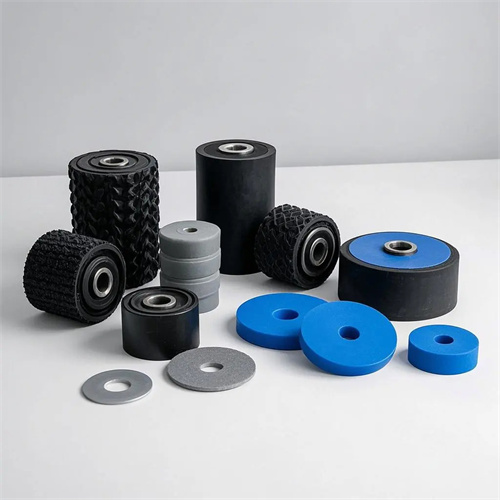Pneumatic demoulding of large plastic parts
Due to their large size and weight, traditional mechanical demolding methods often face numerous challenges, such as insufficient demolding force and the potential for deformation or damage. However, pneumatic demolding has gained widespread application in large plastic part production due to its unique advantages. Pneumatic demolding utilizes compressed air pressure to inject air between the part and the mold surface through pores located in the mold cavity or core, creating an air film that reduces friction between the part and the mold. The air pressure simultaneously ejects the part from the mold. This demolding method offers a simple structure, evenly distributed demolding force, and smooth operation, effectively preserving the appearance and dimensional accuracy of large plastic parts.

When designing a pneumatic demolding system for large plastic parts, the first step is to determine appropriate air source parameters. Compressed air pressure and flow rate are key factors influencing demolding effectiveness. Too low a pressure may not provide sufficient demolding force, making it difficult for the part to be released from the mold; too high a pressure may cause deformation or even damage during the demolding process. Generally speaking, for large plastic parts, the compressed air pressure is typically set between 0.4 and 0.8 MPa. The specific value needs to be adjusted based on the part’s material, structure, and weight. For example, for heavy parts that adhere closely to the mold surface, the pressure may need to be increased appropriately; for brittle materials or thin-walled parts, the pressure should be reduced to avoid cracking. Furthermore, the air source flow rate should ensure a sufficient air film is formed within a short period of time. A suitable air storage tank and pressure reducing valve are typically required to ensure stable air pressure.

The placement and structural design of air holes are also key components of a pneumatic demolding system. The placement of air holes should be carefully considered based on the part’s shape and demolding difficulty. They are typically located in areas with greater contact between the part and the mold, where demolding resistance is greatest, as well as at the edges or corners of the part. This ensures even distribution of air between the part and the mold. The number of air holes should be determined based on the size of the part; large parts typically require multiple air holes to ensure uniform demolding force. Furthermore, the diameter of the air holes is generally between 0.5 and 1.5 mm. A diameter too small can easily become clogged by the plastic melt, while a diameter too large can leave air marks on the part’s surface. To prevent melt from clogging the air holes, a check valve or one-way valve is typically installed at the air hole entrance. This prevents melt from entering the airway during the injection molding process while allowing compressed air to flow smoothly during demolding.

The coordination of the pneumatic demolding system with other mold structures is also crucial. Mold design requires space and location for air ducts, which should be as short and straight as possible to reduce air flow resistance. Furthermore, the connection between the air ducts and the air holes should be well sealed to prevent air leakage that could lead to insufficient demolding force. Furthermore, pneumatic demolding systems are often used in conjunction with mechanical demolding mechanisms (such as ejector pins and ejector plates) to form a combined demolding method. For large plastic parts, pneumatic demolding alone may not be able to fully eject the part from the mold. In such cases, a mechanical demolding mechanism is required to assist in lifting the part to a certain height before pneumatic demolding is used to fully release it from the mold. This leverages the advantages of both demolding methods, improving demolding reliability and efficiency. For example, in the production of large automobile bumpers, a push plate is typically used to lift the bumper 5-10 mm, followed by compressed air and pneumatic demolding to fully release it from the mold, thus avoiding the deformation that could be caused by mechanical demolding alone.

In practical applications, the commissioning and maintenance of pneumatic demolding systems also require significant attention. During commissioning, the air pressure and flow rate should be gradually adjusted, and the demolding of the plastic part should be observed to ensure smooth and damage-free release from the mold. The air holes should also be checked for patency to prevent demolding failures caused by blockage. During routine maintenance, the airways and air holes should be cleaned regularly to prevent obstruction by debris such as plastic debris and oil. Connections should be inspected for tightness, and damaged seals or valves should be replaced promptly. The air supply should be purified to remove moisture and impurities to prevent corrosion or blockage. Proper commissioning and maintenance can ensure the long-term stable operation of the pneumatic demolding system, improving the production efficiency and quality of large plastic parts.
